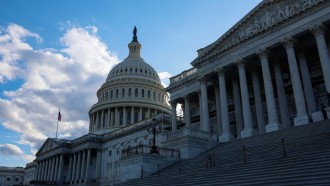The Biden administration has taken new measures to boost the defence of key US infrastructure from cyberattacks from China and Russia.
In an effort to improve current policies, President Joe Biden modified the Presidential Policy Directive, or PPD-21, an Obama-era directive from 2013. This change comes amid increased concerns about the escalating threat foreign actors pose.
"The threat environment has changed significantly since PPD-21 was issued in 2013, shifting from counterterrorism to strategic competition, advances in technology like artificial intelligence and malicious cyberactivity from nation-state actors." a White House official told reporters.
According to CNBC, the revised policy aims to safeguard vital sectors such as energy and financial services from malicious cyber activities orchestrated by state-sponsored actors.
Over the past decade, technological advancements have fueled a corresponding evolution in cyber threats, prompting the need for a comprehensive overhaul of existing defence mechanisms.

(Photo : BRENDAN SMIALOWSKI/AFP via Getty Images)
US President Joe Biden speaks during the White House Correspondents' Association (WHCA) dinner at the Washington Hilton, in Washington, DC, on April 27, 2024.
Biden Administration Bolsters US Critical Infrastructure Security Amid Rising Cyber Threats from China
The effort to revise the policy began over a year ago, focusing on modernization to keep pace with the rapidly changing threat landscape.
FBI Director Christopher Wray has repeatedly warned of the grave danger posed by Chinese hackers targeting critical infrastructure, including the electrical grid, water plants, and transportation systems.
Earlier in April, Wray informed US officials that Chinese government-linked hackers had penetrated US critical systems and were waiting "for just the right moment to deal a devastating blow."
Despite efforts to improve diplomatic relations, tensions between the United States and China remain high, with cybersecurity emerging as a contentious issue.
Read Also: Unprecedented Surge in Credential Stuffing Hacks Observed by Okta
Biden's National Security Memorandum to Improve US Critical Infrastructure Protection
To address these pressing concerns, President Biden signed a National Security Memorandum (NSM) aimed at securing and enhancing the resilience of US critical infrastructure.
As detailed in a White House Fact Sheet, the NSM replaces the decade-old presidential policy document on critical infrastructure protection and launches a comprehensive effort to protect against all threats and hazards, current and future.
Under the NSM, the Department of Homeland Security (DHS) is empowered to lead the whole-of-government effort to secure critical infrastructure, with the Cybersecurity and Infrastructure Security Agency (CISA) acting as the National Coordinator for Security and Resilience.
Moreover, the NSM directs the US Intelligence Community to collect, produce, and share intelligence with federal departments, agencies, and critical infrastructure operators. This collaboration is essential in providing timely and actionable intelligence to preempt and mitigate potential cyber threats.
Furthermore, the NSM reaffirms the designation of 16 critical infrastructure sectors and federal departments or agencies as Sector Risk Management Agencies (SRMAs) for each sector.
These SRMAs are tasked with leading risk management and coordination efforts within their respective sectors, ensuring a coordinated and cohesive approach to protecting critical infrastructure.
Stay posted here at Tech Times.
Related Article: Debt Collection Agency FBCS Suffers Data Breach Affecting 1.9 Million People






